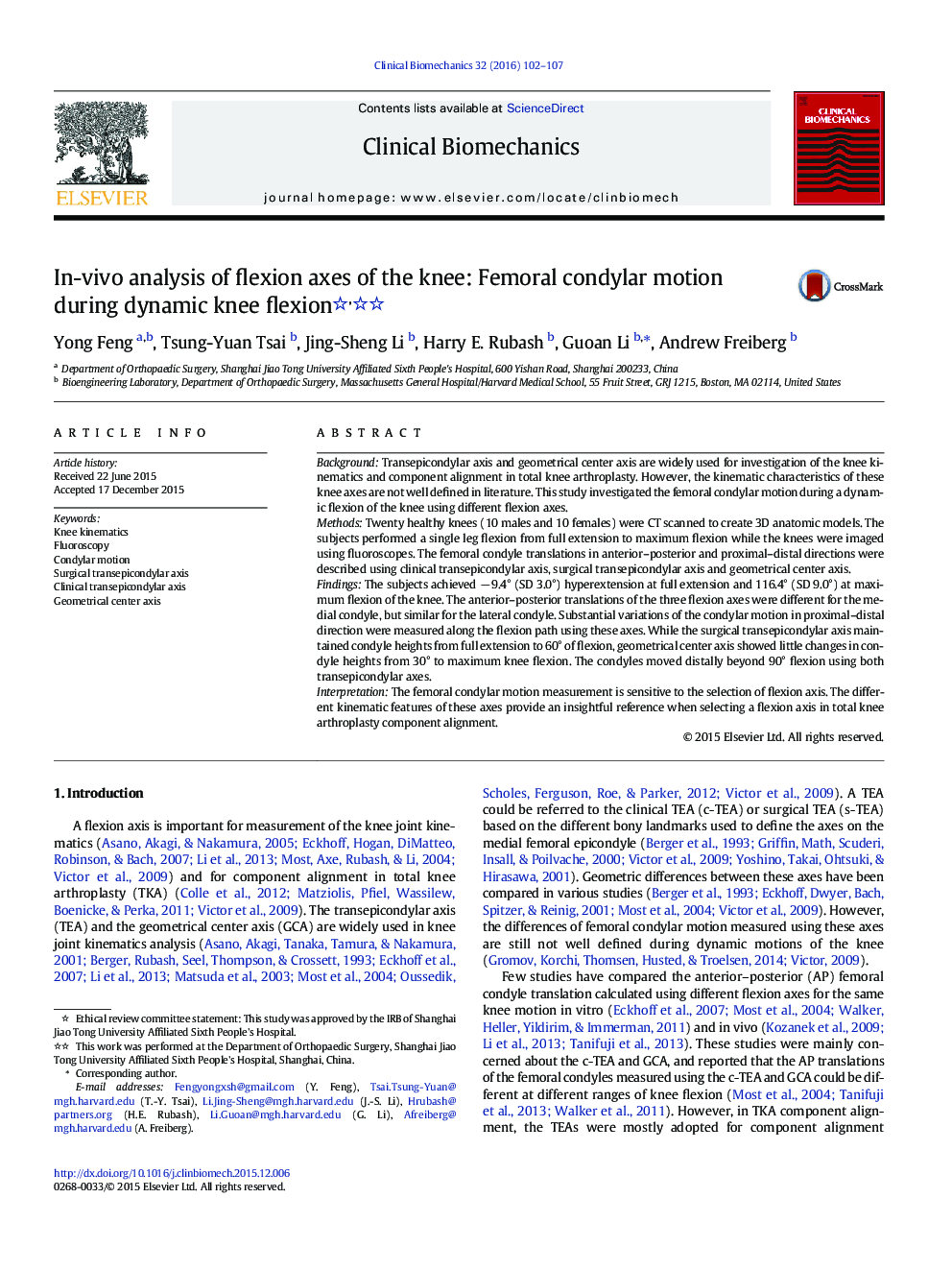| کد مقاله | کد نشریه | سال انتشار | مقاله انگلیسی | نسخه تمام متن |
|---|---|---|---|---|
| 6204607 | 1603746 | 2016 | 6 صفحه PDF | دانلود رایگان |

- Geometrical center axis was used to describe condyle motion during flexion.
- Clinical and surgical transepicondylar axes were measured for condyle motion.
- Condyle height of geometrical center axis showed little changes beyond 30° flexion.
- Surgical transepicondylar axis maintained condyle heights below 60° flexion.
- Both transepicondylar axes moved distally beyond 90° flexion.
BackgroundTransepicondylar axis and geometrical center axis are widely used for investigation of the knee kinematics and component alignment in total knee arthroplasty. However, the kinematic characteristics of these knee axes are not well defined in literature. This study investigated the femoral condylar motion during a dynamic flexion of the knee using different flexion axes.MethodsTwenty healthy knees (10 males and 10 females) were CT scanned to create 3D anatomic models. The subjects performed a single leg flexion from full extension to maximum flexion while the knees were imaged using fluoroscopes. The femoral condyle translations in anterior-posterior and proximal-distal directions were described using clinical transepicondylar axis, surgical transepicondylar axis and geometrical center axis.FindingsThe subjects achieved â 9.4° (SD 3.0°) hyperextension at full extension and 116.4° (SD 9.0°) at maximum flexion of the knee. The anterior-posterior translations of the three flexion axes were different for the medial condyle, but similar for the lateral condyle. Substantial variations of the condylar motion in proximal-distal direction were measured along the flexion path using these axes. While the surgical transepicondylar axis maintained condyle heights from full extension to 60° of flexion, geometrical center axis showed little changes in condyle heights from 30° to maximum knee flexion. The condyles moved distally beyond 90° flexion using both transepicondylar axes.InterpretationThe femoral condylar motion measurement is sensitive to the selection of flexion axis. The different kinematic features of these axes provide an insightful reference when selecting a flexion axis in total knee arthroplasty component alignment.
Journal: Clinical Biomechanics - Volume 32, February 2016, Pages 102-107